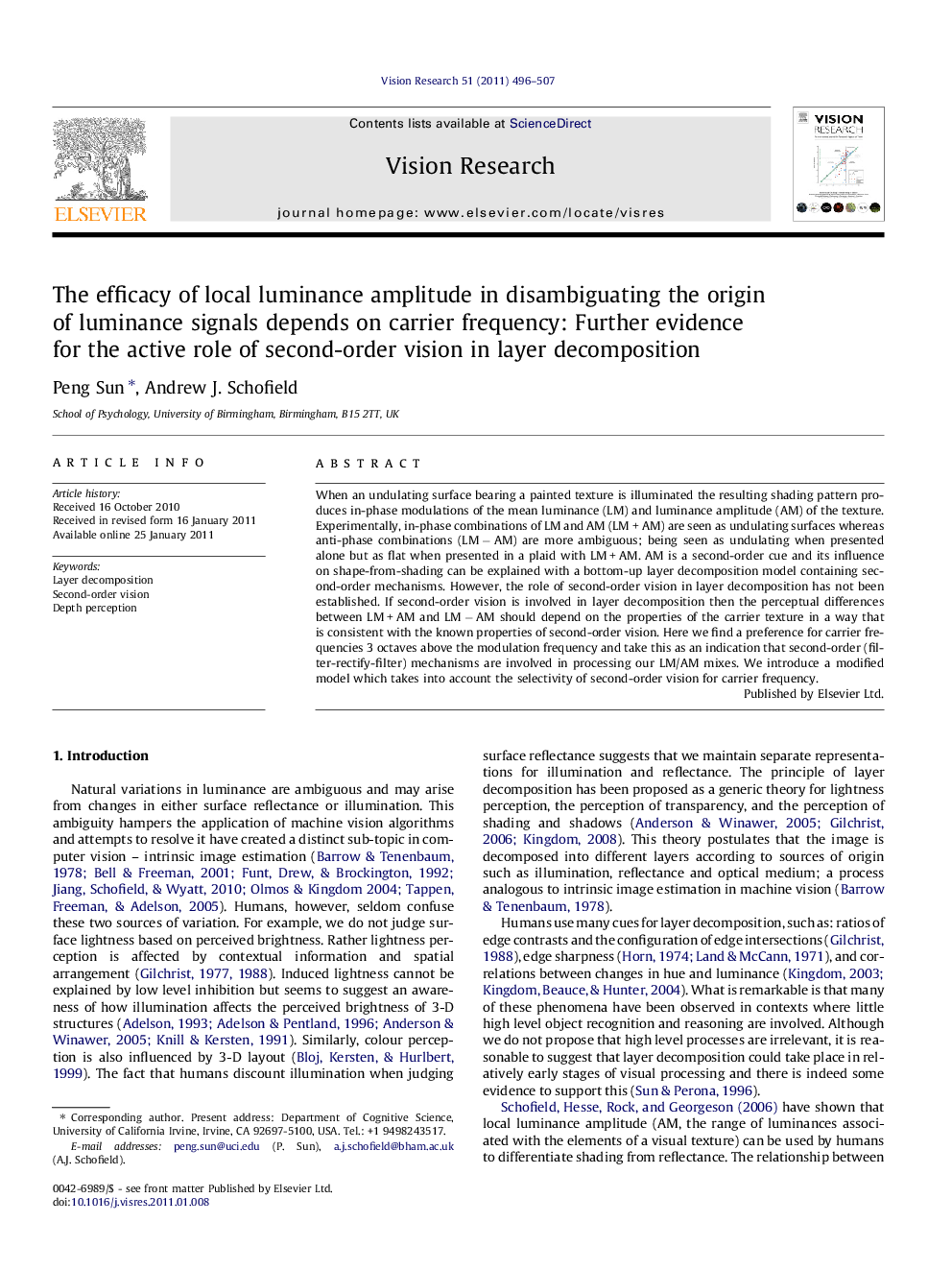| Article ID | Journal | Published Year | Pages | File Type |
|---|---|---|---|---|
| 4034250 | Vision Research | 2011 | 12 Pages |
When an undulating surface bearing a painted texture is illuminated the resulting shading pattern produces in-phase modulations of the mean luminance (LM) and luminance amplitude (AM) of the texture. Experimentally, in-phase combinations of LM and AM (LM + AM) are seen as undulating surfaces whereas anti-phase combinations (LM − AM) are more ambiguous; being seen as undulating when presented alone but as flat when presented in a plaid with LM + AM. AM is a second-order cue and its influence on shape-from-shading can be explained with a bottom-up layer decomposition model containing second-order mechanisms. However, the role of second-order vision in layer decomposition has not been established. If second-order vision is involved in layer decomposition then the perceptual differences between LM + AM and LM − AM should depend on the properties of the carrier texture in a way that is consistent with the known properties of second-order vision. Here we find a preference for carrier frequencies 3 octaves above the modulation frequency and take this as an indication that second-order (filter-rectify-filter) mechanisms are involved in processing our LM/AM mixes. We introduce a modified model which takes into account the selectivity of second-order vision for carrier frequency.
Research highlights► Humans ability to discriminate between illuminance changes and changes due to surface reflectance varies with texture frequencies. ► A control experiment ensured this dependency is unlikely due to visual masking. ► A model containing initially separated but later combined first-and second-order channels gives good prediction of human responses observed here and elsewhere.
